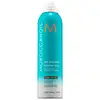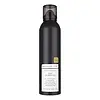What's inside
What's inside
 Key Ingredients
Key Ingredients

No key ingredients
 Benefits
Benefits

 Concerns
Concerns

 Ingredients Side-by-side
Ingredients Side-by-side

Hydrofluorocarbon 152a
Butane
Oryza Sativa Starch
AbsorbentSd Alcohol 40-B
AstringentDisiloxane
Skin ConditioningArgania Spinosa Kernel Oil
EmollientPvp
Emulsion StabilisingWater
Skin ConditioningParfum
MaskingMagnesium Stearate
Cosmetic ColorantDiisopropyl Adipate
EmollientCetrimonium Chloride
AntimicrobialMethoxycinnamidopropyl Hydroxysultaine
UV AbsorberCI 60725
Cosmetic ColorantCI 17200
Cosmetic ColorantIsobutane
Hydrofluorocarbon 152a
Dimethylimidazolidinone Rice Starch
AbsorbentAlcohol Denat.
AntimicrobialButane
Parfum
MaskingAluminum Starch Octenylsuccinate
AbsorbentWater
Skin ConditioningAcrylates Copolymer
Magnesium Carbonate
AbsorbentEthylhexyl Methoxycinnamate
UV AbsorberVp/Va Copolymer
Cetearamidoethyldiethonium Succinoyl Hydrolyzed Pea Protein
CleansingHypnea Musciformis Extract
Skin ProtectingGlycerin
HumectantSargassum Filipendula Extract
Skin ProtectingPanthenol
Skin ConditioningTetrahexyldecyl Ascorbate
AntioxidantSorbitol
HumectantCaprylic/Capric Triglyceride
MaskingAmp-Isostearoyl Hydrolyzed Wheat Protein
CleansingChamomilla Recutita Flower Extract
MaskingHelianthus Annuus Seed Oil
EmollientMangifera Indica Seed Butter
Skin ConditioningPersea Gratissima Oil
Skin ConditioningRicinus Communis Seed Oil
MaskingPentylene Glycol
Skin ConditioningCoco-Glucoside
CleansingGelidiella Acerosa Extract
Skin ProtectingT-Butyl Alcohol
PerfumingPhenoxyethanol
PreservativeAlgin
MaskingBHT
AntioxidantCarrageenan
Chitosan
Guar Hydroxypropyltrimonium Chloride
Skin ConditioningSorbitan Oleate
EmulsifyingXanthan Gum
EmulsifyingRhodiola Rosea Root Extract
EmollientEthylhexylglycerin
Skin ConditioningDenatonium Benzoate
MaskingIsobutane, Hydrofluorocarbon 152a, Dimethylimidazolidinone Rice Starch, Alcohol Denat., Butane, Parfum, Aluminum Starch Octenylsuccinate, Water, Acrylates Copolymer, Magnesium Carbonate, Ethylhexyl Methoxycinnamate, Vp/Va Copolymer, Cetearamidoethyldiethonium Succinoyl Hydrolyzed Pea Protein, Hypnea Musciformis Extract, Glycerin, Sargassum Filipendula Extract, Panthenol, Tetrahexyldecyl Ascorbate, Sorbitol, Caprylic/Capric Triglyceride, Amp-Isostearoyl Hydrolyzed Wheat Protein, Chamomilla Recutita Flower Extract, Helianthus Annuus Seed Oil, Mangifera Indica Seed Butter, Persea Gratissima Oil, Ricinus Communis Seed Oil, Pentylene Glycol, Coco-Glucoside, Gelidiella Acerosa Extract, T-Butyl Alcohol, Phenoxyethanol, Algin, BHT, Carrageenan, Chitosan, Guar Hydroxypropyltrimonium Chloride, Sorbitan Oleate, Xanthan Gum, Rhodiola Rosea Root Extract, Ethylhexylglycerin, Denatonium Benzoate
Ingredients Explained
These ingredients are found in both products.
Ingredients higher up in an ingredient list are typically present in a larger amount.
Butane is a gas derived from petroleum and natural gas. It is used as an aerosol propellant.
We don't have a description for Hydrofluorocarbon 152a yet.
Parfum is a catch-all term for an ingredient or more that is used to give a scent to products.
Also called "fragrance", this ingredient can be a blend of hundreds of chemicals or plant oils. This means every product with "fragrance" or "parfum" in the ingredients list is a different mixture.
For instance, Habanolide is a proprietary trade name for a specific aroma chemical. When used as a fragrance ingredient in cosmetics, most aroma chemicals fall under the broad labeling category of “FRAGRANCE” or “PARFUM” according to EU and US regulations.
The term 'parfum' or 'fragrance' is not regulated in many countries. In many cases, it is up to the brand to define this term.
For instance, many brands choose to label themselves as "fragrance-free" because they are not using synthetic fragrances. However, their products may still contain ingredients such as essential oils that are considered a fragrance by INCI standards.
One example is Calendula flower extract. Calendula is an essential oil that still imparts a scent or 'fragrance'.
Depending on the blend, the ingredients in the mixture can cause allergies and sensitivities on the skin. Some ingredients that are known EU allergens include linalool and citronellol.
Parfum can also be used to mask or cover an unpleasant scent.
The bottom line is: not all fragrances/parfum/ingredients are created equally. If you are worried about fragrances, we recommend taking a closer look at an ingredient. And of course, we always recommend speaking with a professional.
Learn more about ParfumWater. It's the most common cosmetic ingredient of all. You'll usually see it at the top of ingredient lists, meaning that it makes up the largest part of the product.
So why is it so popular? Water most often acts as a solvent - this means that it helps dissolve other ingredients into the formulation.
You'll also recognize water as that liquid we all need to stay alive. If you see this, drink a glass of water. Stay hydrated!
Learn more about Water